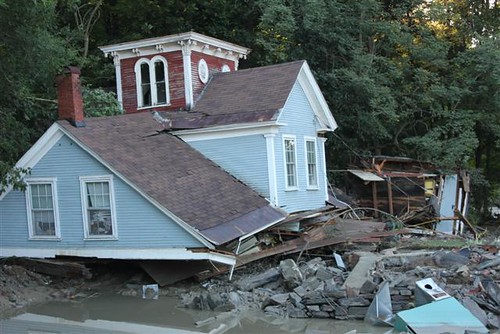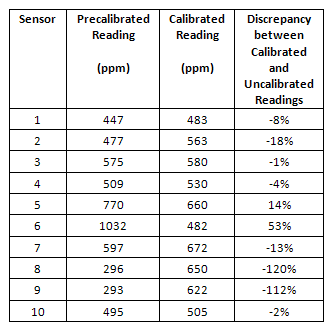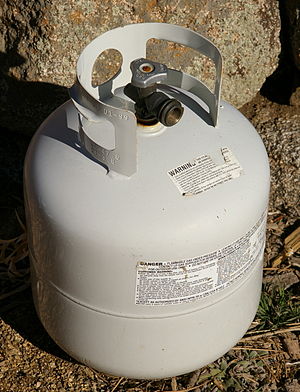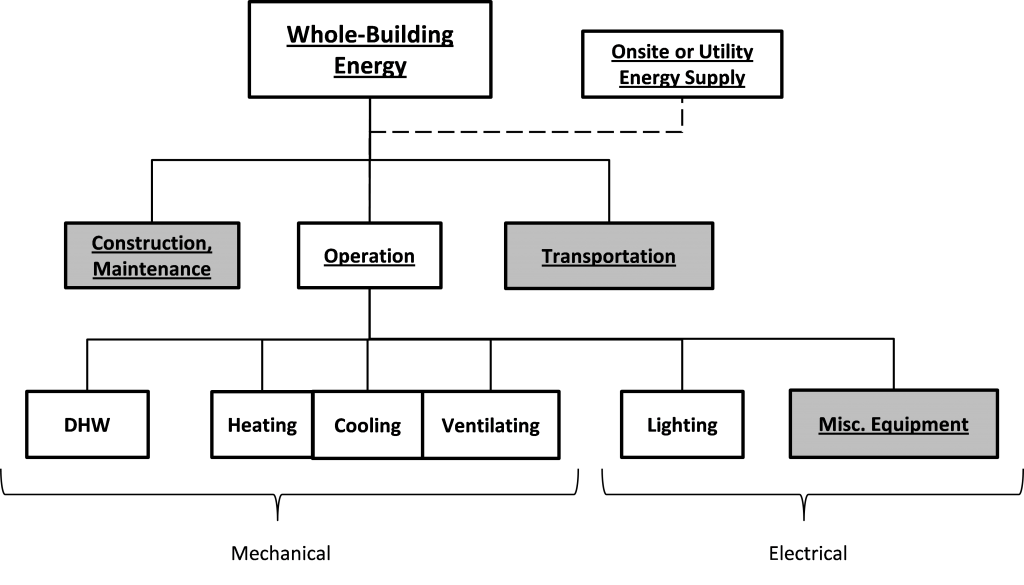Last week's post introduced the concept of building for a future of extreme weather events, or why energy performance equals building resilience. I described two buildings – "The Base" typifies common design and construction practices and is slightly better than code* and – "The Ace" which is designed well beyond code in response to issues facing building owners as well as the larger community such as the need to control building operating costs through minimizing the need for energy inputs, the desire to limit greenhouse gas emissions and providing optimum comfort to building occupants.
4 min read
Energy Performance Equals Building Resilience: Part 2 - The Building of the Future
By Jennifer Chiodo on Sep 26, 2012 6:00:00 AM
Topics: Green Building Building Performance & Technology
4 min read
Energy Performance Equals Building Resilience: Part 1
By Jennifer Chiodo on Sep 19, 2012 6:00:00 AM
Energy performance equals building resilience, or so we firmly believe here at Cx Associates. When we named this blog “Building Energy Resilience” Vermont had recently experienced the devastating effects of Tropical Storm Irene. Now, a year later, we continue to seek ways to ensure buildings can survive severe storms with the least possible disruption. According to Environment America, 4 out of 5 Americans live in areas that have been federally designated as having weather related natural disasters in the last six years! Since the vast majority of us continue to emit more carbon dioxide than can be absorbed by natural systems on the planet, we need to begin to look at the tools available that will allow us to survive the impacts of an increasingly dynamic and unpredictable climate.
Topics: Green Building Building Performance & Technology
3 min read
DDC Sensor Calibration Is Important and Often Overlooked
By Eveline Killian on Sep 12, 2012 6:00:00 AM
The Importance of Sensors
A DDC system is programmed to control all of the HVAC equipment in the building. In the central plant equipment, an outdoor air temperature sensor determines if the building is in cooling or heating mode, a flow meter measures how much hot or chilled water is being supplied, and a liquid temperature sensor regulates the hot and chilled water supply temperatures. Within the conditioned spaces, a thermostat measures the room temperature and sends a signal back to the air handling unit to dictate if hot or cold air is required. A temperature sensor and an air pressure sensor determine how much conditioned air is being supplied and at what temperature.
Topics: Building Performance & Technology
5 min read
Sustainability and Workplace Culture
By Emily Cross on Sep 5, 2012 6:00:00 AM
One of the first things I became aware of when I joined Cx Associates is that sustainability is a way of thinking. I learned efficiency and judicious use of resources can be approached on many different levels, from choosing a more efficient clothes dryer, to finding alternatives for drying clothes, such as line or rack drying. All efforts toward sustainability are important, and a large impact can often be had for little effort and inconvenience. Multiplied by dozens or even hundreds and thousands of people, a seemingly small change can go a long way.
Topics: Sustainability Workplace & People
3 min read
The Transportation Energy Efficiency of Buildings
By Brent Weigel on Aug 29, 2012 8:00:00 AM
You are probably aware of the substantial energy a commercial office building requires for comfort heating and cooling, ventilation, water heating, lighting, miscellaneous equipment, and elevators. These energy systems are visible because they are metered by utilities and paid for by building owners and tenants. But utility-metered energy consumption is typically a fraction of the total building energy impact. Transportation activity is a major component of what I and others refer to as “whole-building” energy consumption.
Topics: Green Building Energy Efficiency
3 min read
Benchmarking is Good for Everyone
By Jennifer Chiodo on Aug 22, 2012 6:00:00 AM
Benchmarking is on my mind. I've been reviewing the project submissions for the Vermont’s Greenest Buildings Awards and am so impressed by what some teams are achieving in designing and operating energy efficient buildings that use far less than “typical” buildings. The only way we can know how good (or bad) our buildings are is to benchmark them. Benchmarking is a process where we calculate the annual energy intensity (kbtu/sf/yr) – adjusted to reflect weather variations from “normal” which is known as “normalizing” the data for weather. This number is like the building’s miles per gallon and can be used to find out whether the building is an energy sipping hybrid, a typical mid-sized sedan or a guzzling SUV.
Topics: Green Building Standards and Metrics
5 min read
Condenser Water Pumps: How to Get 16 Percent More - for Free
By Matt Napolitan on Aug 15, 2012 6:00:00 AM
Recently, while reviewing the controls strategy for a large building’s condenser water pumps, I came across something I wanted to share – a simple opportunity for efficiency with no first cost. One, in fact, that increased pumping efficiency by 16% for a large portion of the annual operating hours. To find this opportunity, we considered the off-peak performance of the pumping system, not just its ability to meet peak loads.
Topics: Energy Efficiency Building Performance & Technology
5 min read
Summer Barbecue With the Refrigerant R-290
By Ben Fowler on Aug 8, 2012 6:00:00 AM
Over the weekend I connected a tank of the refrigerant R-290 to my gas grill, fired it up, and had some delicious fresh grilled Vermont sweet corn on the cob. Very tasty.
Topics: Sustainability Green Building
4 min read
Is “Whole Building” Energy Consumption Whole?
By Brent Weigel on Aug 1, 2012 6:00:00 AM
It is common knowledge in the architecture/engineering (A/E) professions that buildings consume a large portion of the total energy consumed in the United States (approximately 40 percent)[1]. This awareness serves as an essential motivator for the green building movement and the associated energy efficiency agenda in the A/E industry. As a growing number of building professionals work to improve the efficiency and sustainability of the built environment, it is worth considering how progress toward a more efficient and sustainable built environment may be constrained by industry conventions, standards, and disciplinary boundaries. You can view the industry’s concept of “whole building” energy consumption as one such constraint.
Topics: Green Building Building Performance & Technology
4 min read
The Success of a Performance Contract Lies in the Details
By Eveline Killian on Jul 25, 2012 6:00:00 AM
A Performance Contract with an Energy Services Company (ESCO) can be a powerful tool to enable a business to improve the performance of their facility without requiring money upfront. An ESCO assesses a facility’s energy efficiency opportunity, manages the improvement implementation and guarantees the energy savings will be greater than the cost of the project. In my recent blog post, ESCO: Energy Efficiency Investment with No Money Down, I describe the process of a Performance Contract and state “the ESCO assumes the risk of under-performance.” In recent months, however, the cost of natural gas has decreased substantially and many existing Performance Contracts are seeing negative savings for which the building owners are responsible.










